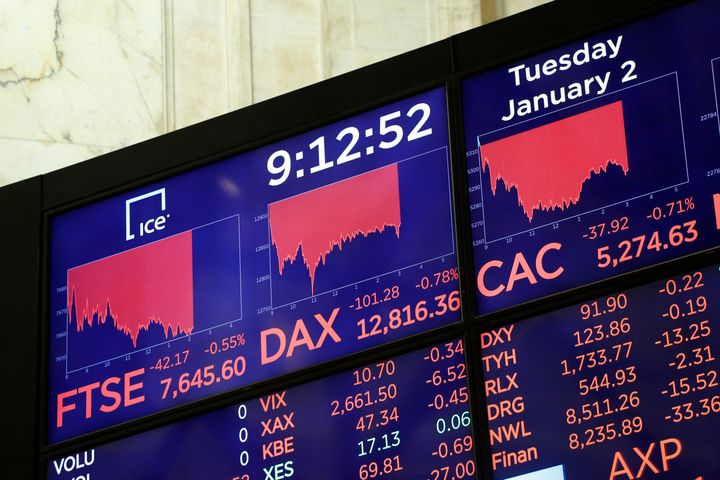Stock markets around the world have crumbled as fears over covid-19 sparked the worst bloodbath since 1987, with the US following Britain’s downward trajectory on Thursday.
The FTSE 100, the index of the UK’s biggest firms, closed the day down by more than one 10th.
Investors ran scared from London’s shares as the index closed Thursday down by 639.04 points to 5237.48.
It wiped more than £160 billion off the value of the index’s 100 companies, the worst value loss in history in nominal terms, ahead of the £124.7 billion that was lost on Monday.
The 10.87% fall is worse than any day during the 2008 financial crisis and investors wanting to find a bigger drop need to look back to October 20 1987, the day after Black Monday, when the FTSE 100 fell 12.2%.
It is the second worst day in the FTSE’s history, ahead of the 10.84% fall on Black Monday itself. The index is now at lowest closing point since 2011.
Later, the escalating coronavirus emergency sent US stocks to their worst losses since the Black Monday crash.
The plunge extended a sell-off that has wiped out most of Wall Street’s gains since US President Donald Trump’s election.
The S&P 500 plummeted 9.5%, for a total drop of 26.7% from its all-time high, set just last month.
That puts it way past the 20% threshold to make this a bear market, snapping an unprecedented, nearly 11-year bull-market run.
The Dow Jones Industrial Average sank 10% for its worst day since a nearly 23% drop on October 19 1987.
European markets lost 12% in one of their worst days ever, even after the European Central Bank pledged to buy more bonds and offer more help for the economy.

The heavy losses came amid a cascade of cancellations and shutdowns across the globe — including Trump’s suspension of most travel to the US from Europe — and rising worries that the White House and other authorities around the world cannot counter the economic damage from the coronavirus pandemic any time soon.
Stocks fell so fast on Wall Street at the opening bell that they triggered an automatic, 15-minute trading halt for the second time this week.
The so-called circuit breakers were first adopted after the 1987 crash, and until this week had not been tripped since 1997.
The Dow briefly turned upward and halved its losses at one point in the afternoon after the Federal Reserve announced it would step in to ease “highly unusual disruptions” in the Treasury market. But the burst of momentum quickly faded.
Trump often points proudly to the big rise on Wall Street under his administration and warned a crowd at a rally last August that “whether you love me or hate, you gotta vote for me”, or else your investments will go “down the tubes”.
On Wednesday, the Dow finished the day down more than 20% from its all-time high, set just last month, officially entering what is known as a bear market for the first time in over a decade.
The combined health crisis and retreat on Wall Street heightened fears of a recession.
“This is bad. The worst and fastest stock market correction in our career,” Chris Rupkey, chief financial economist at MUFG Union, said in a research note overnight. “The economy is doomed to recession if the country stops working and takes the next 30 days off. The stock market knows it.”
The coronavirus has infected around 128,000 people worldwide and killed over 4,700. The death toll in the US climbed to 39, with over 1,300 infections.

